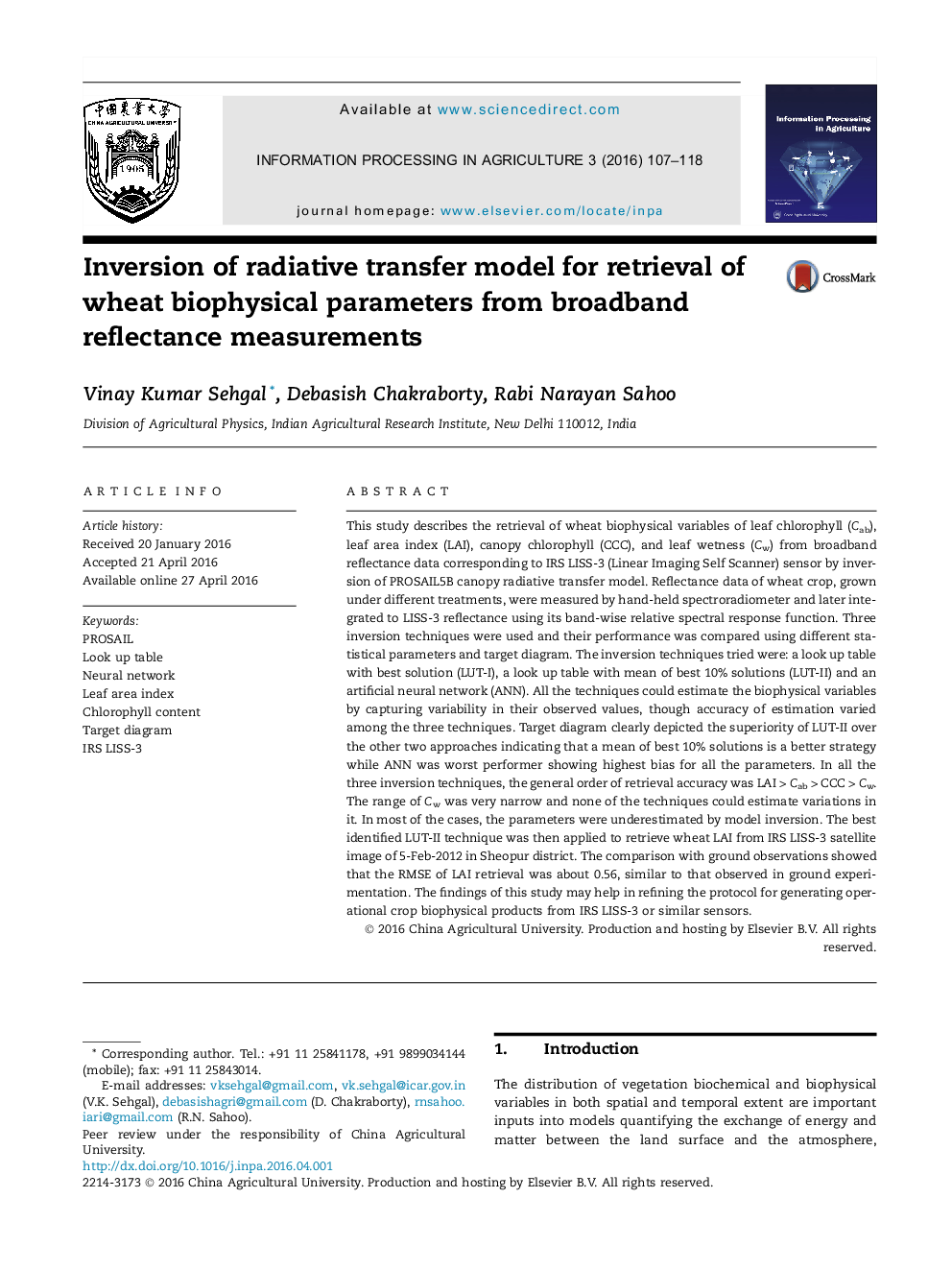| کد مقاله | کد نشریه | سال انتشار | مقاله انگلیسی | نسخه تمام متن |
|---|---|---|---|---|
| 4493303 | 1318620 | 2016 | 12 صفحه PDF | دانلود رایگان |
• PROSAIL was inverted by LUT-I, LUT-II and ANN techniques using ground reflectance.
• Retrieved wheat leaf chlorophyll, leaf water, canopy chlorophyll and leaf area index.
• Target diagram showed LUT-II as the best and ANN the poorest for all parameters.
• Leaf area index (LAI) was retrieved with the best and leaf water with least accuracy.
• LAI retrieval from IRS LISS-3 image by LUT-II showed high accuracy with 0.56 RMSE.
This study describes the retrieval of wheat biophysical variables of leaf chlorophyll (Cab), leaf area index (LAI), canopy chlorophyll (CCC), and leaf wetness (Cw) from broadband reflectance data corresponding to IRS LISS-3 (Linear Imaging Self Scanner) sensor by inversion of PROSAIL5B canopy radiative transfer model. Reflectance data of wheat crop, grown under different treatments, were measured by hand-held spectroradiometer and later integrated to LISS-3 reflectance using its band-wise relative spectral response function. Three inversion techniques were used and their performance was compared using different statistical parameters and target diagram. The inversion techniques tried were: a look up table with best solution (LUT-I), a look up table with mean of best 10% solutions (LUT-II) and an artificial neural network (ANN). All the techniques could estimate the biophysical variables by capturing variability in their observed values, though accuracy of estimation varied among the three techniques. Target diagram clearly depicted the superiority of LUT-II over the other two approaches indicating that a mean of best 10% solutions is a better strategy while ANN was worst performer showing highest bias for all the parameters. In all the three inversion techniques, the general order of retrieval accuracy was LAI > Cab > CCC > Cw. The range of Cw was very narrow and none of the techniques could estimate variations in it. In most of the cases, the parameters were underestimated by model inversion. The best identified LUT-II technique was then applied to retrieve wheat LAI from IRS LISS-3 satellite image of 5-Feb-2012 in Sheopur district. The comparison with ground observations showed that the RMSE of LAI retrieval was about 0.56, similar to that observed in ground experimentation. The findings of this study may help in refining the protocol for generating operational crop biophysical products from IRS LISS-3 or similar sensors.
Journal: Information Processing in Agriculture - Volume 3, Issue 2, June 2016, Pages 107–118
